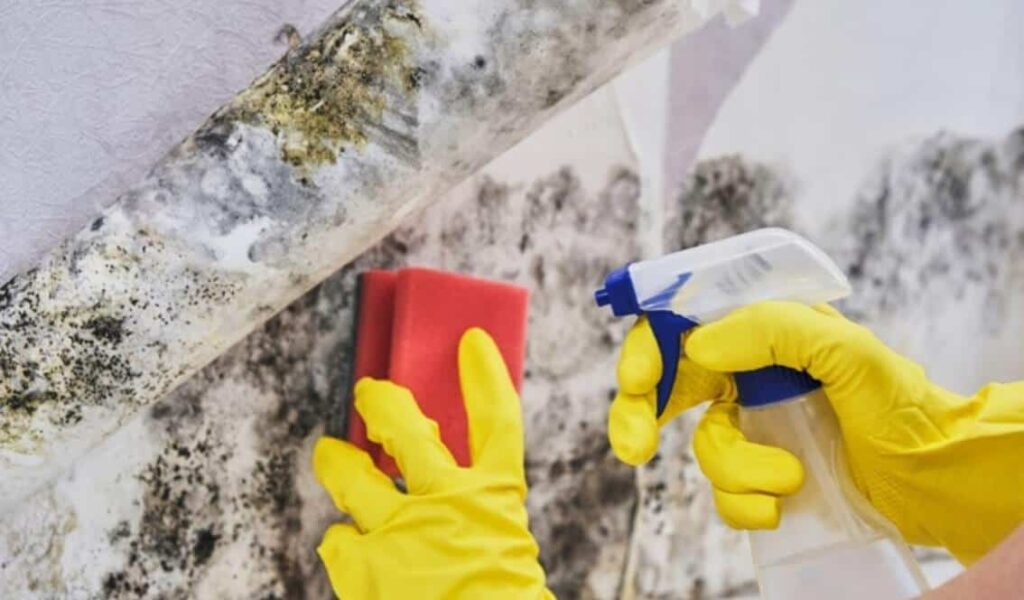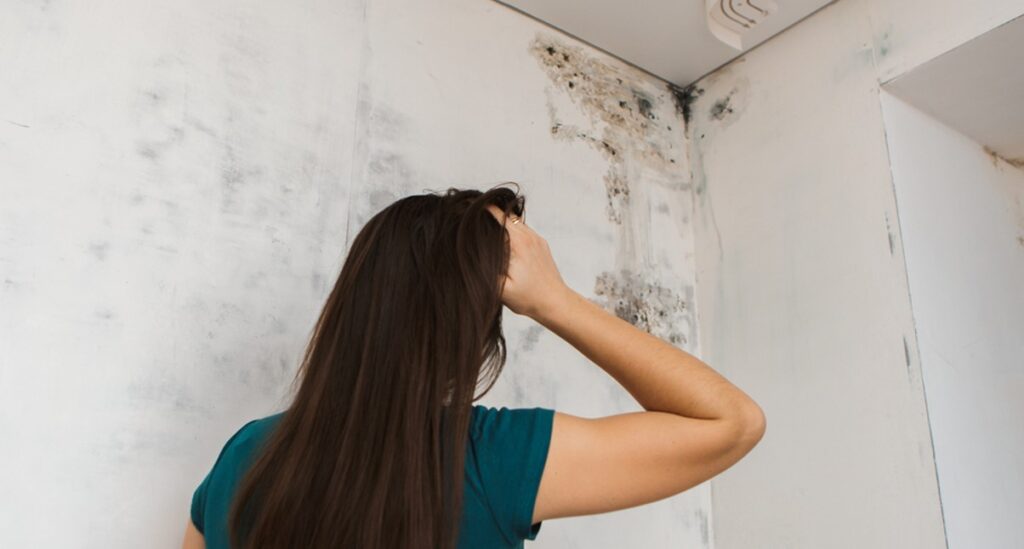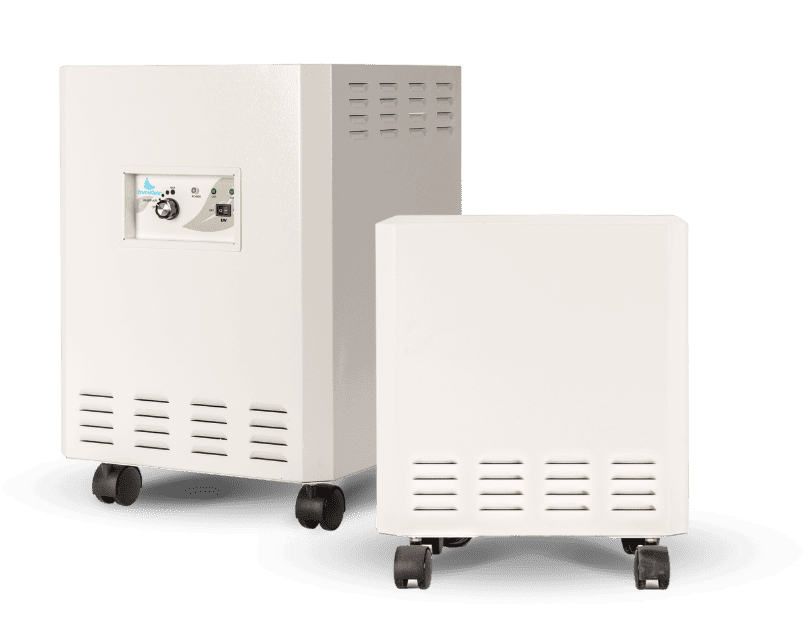According to the Centers for Disease Control and Prevention (CDC), mold is very common in homes and typically grows in high-moisture environments. Continuous exposure to mold spores can lead to symptoms like wheezing, stuffy nose, and other respiratory concerns.
But what causes mold in a house, to begin with?
Effective prevention of mold growth in indoor spaces starts with identifying the common causes. And that’s why we’ve put together a list of possible causes of mold in homes to help you apply the right preventive measure.
10 Common Causes of Mold in Your Home
1. Inadequate Ventilation in the Home
Poor ventilation in the home equals stagnant air, and that’s the perfect breeding environment for household mold.
Make sure to increase air circulation using fans and air purifiers throughout your home, especially after cooking, bathing with hot water, or doing any activity that increases the indoor moisture or humidity level.
2. Leaks in the Roof
A leaky roof (no matter how small the leak is) can cause serious damage to your ceiling over time if left unattended.
In addition to the property damage caused by the leaks, mold spores will develop from the water trickling into your home from the roof.
Regularly check your roof, especially in your attic and other less frequently used rooms. Make sure to replace any old and damaged roofs or tiles.
3. Home Flooding
You might smell mold in your walls if you recently experienced flooding from a major plumbing issue or natural causes.
In any case, the water damage can cause mold-related health issues as well as compromise the integrity of your building.
This is why it is crucial to seek expert help to dry and clean up your home as quickly as possible if you ever experience flooding of any kind.
4. Damp Basement or Crawl Spaces
Basements are some of the dampest spots in most homes, considering their location below ground level.
Crawl spaces are useful for stowing away ductwork, utility cables, and other “guts” of the home.
But like basements, they hardly get adequate ventilation and are difficult to insulate well, which can lead to mold problems.
Consider waterproofing your basement and crawl space to reduce the dampness in these locations and prevent mold growth.
5. Problems With HVAC System
You may have mold growing around your vents and inside your ductwork if you smell musty air from your HVAC system.
The musty smell usually means mold spores are blown around inside your home, which can cause poor IAQ and affect your family’s health.
Clean your vents and consider installing HEPA filters if you smell musty air from your air HVAC system.
6. High Humidity
Mold problems are common in homes with consistently high humidity because of the extremely high moisture content in the air.
If you live in an area with highly humid weather, your home may have mold growth in dark closets, on the walls, and ceiling.
Besides the weather, your home can have high humidity if you use humidifiers or showers. Indoor plants are also sources of high humidity in the home.
If you notice condensation on surfaces in or around your home, consider installing an air purifier to reduce moisture and increase air circulation.
7. Leaks Inside the Home
Mold infestation aside, leaky water pipes in the home can cause serious property damage. Unfortunately, this is a leading cause of mold in most homes, particularly under the sink and behind drywalls.
The bathroom and kitchen are two common areas where pipes can leak in the home, so you want to keep an eye out for mold growth in those spots. Be sure to check for leaky pipes if you notice mold in those locations.
8. Pile of Wet Clothing
A pile of damp laundry ― clean or dirty ― is probably the most overlooked cause of mold in homes. Leaving wet clothing lying around in heaps for as little as 24 hours can lead to mold growth.
Always hang freshly done laundry and air-dry sweaty clothes before storing them to prevent mold and mildew growth.
9. Leaky Foundation
There’s a high chance that water will get into your foundation if you have shallow troughs along the base of your building, which can lead to mold.
The presence of mold anywhere near your foundation is never a good sign. If you notice this, contact a remediation expert as quickly as possible and consider constructing drainages to channel the water from your foundation.
If the problem stems from the water in your garden, consider hiring a landscaping professional to redo the sloppy areas in your yard.
10. Standing Water
Any place in the home where water doesn’t drain properly will eventually experience mold growth.
Mold can grow in just about anywhere water collects, such as:
- Inside the washing machine hose
- Houseplant containers
- Toothbrush holders
- Inside an air conditioning unit
- Inside a dishwasher drain line
Regular checks around these spots in the home can help you uncover potential issues before they become full-blown mold problems.
Getting Rid of Mold in Your Home

Knowing what causes a mold problem in a house is only part of the solution; you still need to get rid of the fungi.
The Environmental Protection Agency (EPA) says there is no practical way to eliminate 100% mold spores from your home environment. Still, you can stay on top of mold growth by controlling indoor moisture levels.
One of the most effective ways to do this is by ensuring adequate ventilation using air purifiers. Mold thrives in damp environments, so increasing air circulation can significantly reduce dampness and forestall mold growth.
Contrary to common belief, air purifiers aren’t only meant to remove unwanted odors. These indoor air quality solutions are also designed to increase air exchange in indoor spaces, reduce humidity and excess moisture, and eliminate mold spores.
The EnviroKlenz Air Systems are top-of-the-line air purification systems designed to capture and destroy harmful indoor air pollutants, including mold and mold-related VOCs. The systems are equipped with HEPA filters and run through a 3-stage filtration process to remove 99.9% of mold and other fungi in indoor environments.
Regardless of what causes mold in a house, knowing and implementing the right preventive steps will ensure better indoor air quality and reduce symptoms of mold exposure.
EnviroKlenz® Medical Disclaimer:
“Any information that is provided on this website is not for the use by any commercial or personal entity without expressed written consent of the blog author. The material and statements illustrated within this blog are not intended to diagnose, treat, cure, or prevent any diseases or medical conditions. Nor does the author in any way guarantee or validate the validity, totality, or efficacy of any claims and will therefore not be held responsible for the content of any claims. Always consult your medical physician for any specific medical advice or recommendations.”









